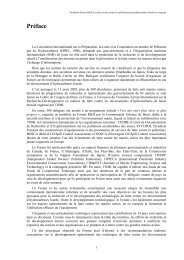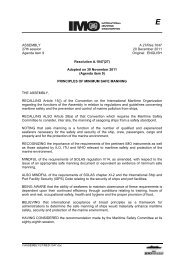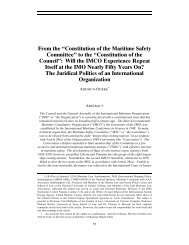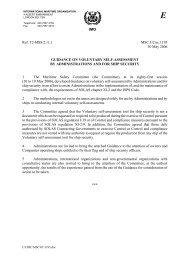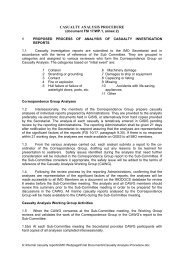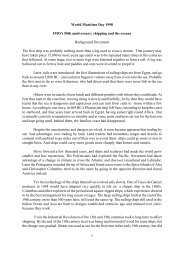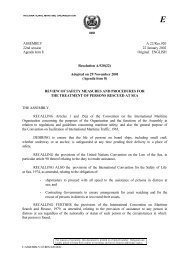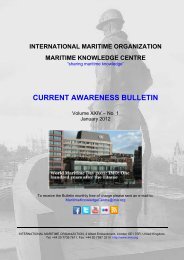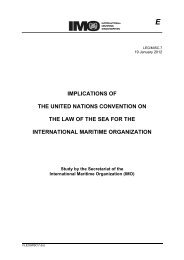Radioactive Waste Disposal at Sea: Public Ideas ... - IMO
Radioactive Waste Disposal at Sea: Public Ideas ... - IMO
Radioactive Waste Disposal at Sea: Public Ideas ... - IMO
Create successful ePaper yourself
Turn your PDF publications into a flip-book with our unique Google optimized e-Paper software.
42 Chapter 3<br />
order to pave the way for major policy innov<strong>at</strong>ions. As Kingdon (1984, p.<br />
134) has observed, “entrepreneurs <strong>at</strong>tempt to ‘soften up’ both policy communities,<br />
which tend to be inertia-bound and resistant to major changes,<br />
and larger publics, getting them used to new ideas and building acceptance<br />
for their proposals. Then when a short-run opportunity to push their proposals<br />
comes, the way has been paved, the important people softened up.”<br />
Policy entrepreneurs therefore persistently push ideas and proposals in<br />
order to acquire influence over policy.<br />
One way in which policy entrepreneurs support, strengthen, and protect<br />
an idea is by spreading it; another is by <strong>at</strong>tacking competing or rival ideas.<br />
Evidently there is interplay between these two str<strong>at</strong>egies, since entrepreneur<br />
coalitions by effectively spreading and consolid<strong>at</strong>ing their ideas reduce the<br />
opportunity for rival ideas to define policy problems. Indeed, as Moore has<br />
observed (1990, p. 73), “dominant ideas have certainly releg<strong>at</strong>ed competing<br />
definitions of the problem to rel<strong>at</strong>ive obscurity.” Moreover, a more direct,<br />
deliber<strong>at</strong>e str<strong>at</strong>egy of policy entrepreneurs inside governments and government<br />
agencies is simply to reduce the dissemin<strong>at</strong>ion of competing ideas and<br />
solutions—thus <strong>at</strong>tempting to monopolize the supply of ideas and solutions—by<br />
preventing rivals from particip<strong>at</strong>ing in the making of policy. For<br />
instance, they may exclude rivals as witnesses <strong>at</strong> hearings and public meetings,<br />
as members of advisory groups, or as authors of policy reports.<br />
Transn<strong>at</strong>ional entrepreneur coalitions function as selection, framing, and<br />
dissemin<strong>at</strong>ion mechanisms for ideas. Many sources of ideas exist. Individual<br />
policy entrepreneurs may occasionally single-handedly produce powerful<br />
ideas. 17 At other times, experts and analysts supply ideas th<strong>at</strong> become influential.<br />
Networks of specialists—such as issue networks, policy communities,<br />
and policy subsystems—gener<strong>at</strong>e and deb<strong>at</strong>e ideas and policy<br />
proposals. 18 By gener<strong>at</strong>ing the ideas and proposals from among which decision<br />
makers choose, they influence the development of domestic and intern<strong>at</strong>ional<br />
policies.<br />
Though it might still be somewh<strong>at</strong> unclear where individual ideas come<br />
from, the crucial issue is whether an idea receives sufficient support, not<br />
who or wh<strong>at</strong> originally produced it. Indeed, Kingdon (1984, p. 76) asserts<br />
th<strong>at</strong> “ideas come from anywhere, actually, and the critical factor th<strong>at</strong><br />
explains the prominence of an item on the agenda is not its source, but<br />
instead the clim<strong>at</strong>e in government or the receptivity to ideas of a given type,<br />
regardless of source.” It is likewise important to distinguish between the




